Visitors from the main cities that make up the Principality of Asturias cannot miss the opportunity to explore the region in depth on one of the most impressive rural and natural journeys in all of Spain and Europe. Although this region does not have as much territorial extension compared to others, we will make clear in this tourist map of Asturias the variety of landscapes and environments that make up the true greatness. We also add the cultural and traditional treasure that its inhabitants preserve in their many villages. Here the ancestral spirit projects the wisdom, the art and the gastronomy that we will be able to appreciate and to make us part of a magical afternoon of tour. Its environment calls you to return to nature and forget about all that time of urban noise, under different reliefs, experiences and views that you can capture in your album of memorable journeys.
Tourist Map of Asturias
Contents
Asturias is a Spanish principality and autonomous community that touches the Bay of Biscay thanks to its location in the north of Spain, consisting of an area of almost 11 thousand square kilometers, something a little small in proportion to other Spanish provinces but because of its geological features has offered a kind of protection walled by mountain ranges that give it an unparalleled beauty of natural environments, today tourist attractions in high demand. Its capital Oviedo, shares relevance with another main Spanish city; Gijón. It has the advantage of having a vast Cantabrian coastline in sight, full of authentic rural treasures full of magic and a lot of culture to be discovered. The Silver Route and the Way of Saint James pass through this province, where you will find authentic architectural marvels of Romanesque art and countless monuments.
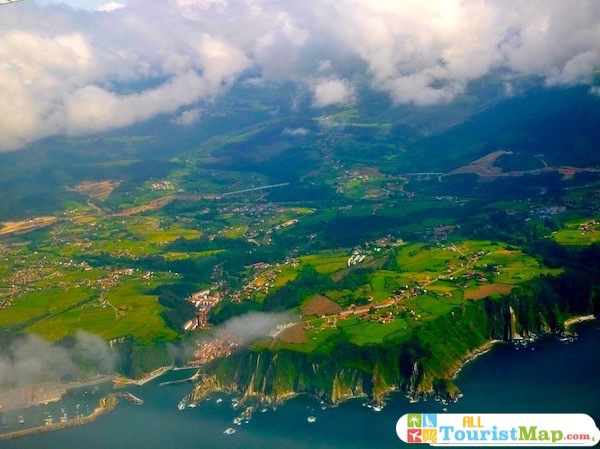
Asturias is simply a mixture of culture and nature. With the above mentioned it would not be strange that what will impact you the most are the natural views, more than its cities, of the most beautiful in Spain, where the Picos de Europa with the Naranjo de Bulnes can not be hidden due to its monolithic presence, as well as the amount of village stops that we will find on the way through the famous Cares Route. Rodiles beach is among the most attractive options for extreme water sports. Villages like Lastres show the coastal beauty carved by man and preserved in their Cantabrian fishing customs, if we talk about something greener then Avilés with its towns mixed with its historical corners then it gives us more reasons to take this region for a good season and enjoy it completely.
Tourist Guide of Asturias
Because Asturias concentrates ancestral wonders with nature, it is not unusual for its gastronomy and craftsmanship to attract your full attention. Its people and villages will take you on a break that will involve preparing and ordering a complete itinerary. That is why our tourist guide of Asturias has taken charge of giving you suggestions of places through our map. Ideal for taking the best of the best among the guided tours, reviews. If you doubt that the monuments of its main cities will take an exclusive space, however you can easily stumble upon more than one in our mapped routes. The important thing is that you will have a complete repertoire of nature and interesting villages within the whole province, because it is all about helping you choose what to visit in Asturias.
What to see in Asturias
Lakes of Covadonga
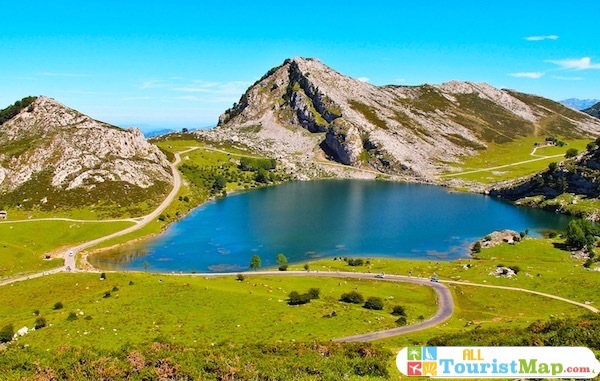
Covadonga, besides the important role in the reconquest, leaves a rich history from which we can draw. And beyond the natural attributes that surround it, its bridges and temples are additional ornaments of its spectacular nature. The lakes of Asturias are popular in the region and are jewels guarded by the Picos de Europa. It turns out that these peaks, due to their thawing activity, have contributed to the drainage of glacial water into these lakes, which can be reached by guided tours. Lake Enol is the first one that we cross when we make the route uphill until we exceed 1000 m.a.s.l.; at the bottom of it we find the figure of the Virgin of Covadonga. The next lake is La Ercina and then El Bricial which usually fills up only when the waters come down from the mountains.
Llanes
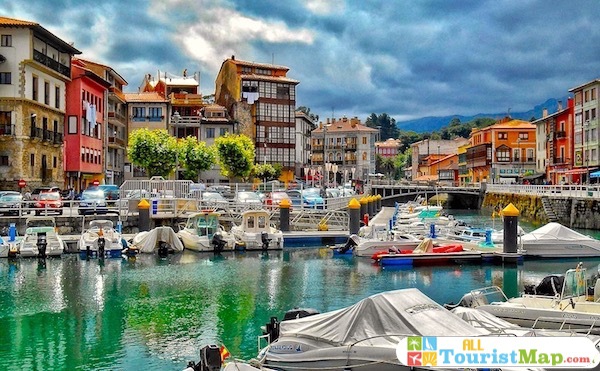
Llanes has an intact historical memory, concentrated in the center of its town. More than just an escape to the rural environment, this town has a port, beaches and seawalls that will make you see the sea from the perspective of the Bay of Biscay, with the Cubes of Memory and the long Paseo de San Pedro as protagonists. There are several places that are scattered along the coast, such as Toró Beach, Guadamía, Ballota, Cobijeru or Toranda. Each one has the particularity to offer you from its high points of impressive views of the coast. This town has a large part of the Asturian coast and a high location. The capital has a thriving population of more than 13 thousand inhabitants. The buildings that you will find interesting are the Town Hall or the Palace of the Counts of Vega, the House of Culture and the Gaztañaga Palace.
Avilés
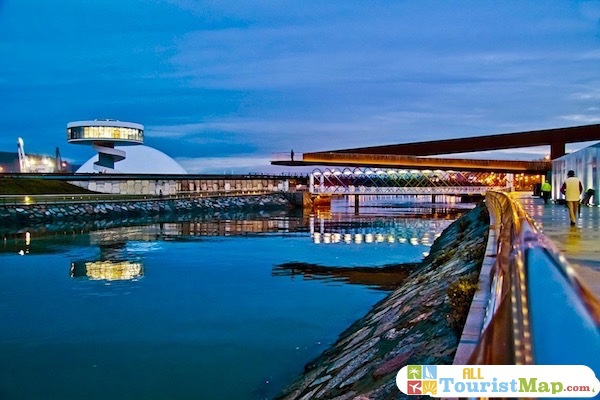
The region of Asturias specializes in having interesting urban centers, Avilés is an example. Beyond the dynamism, of its medieval style that does not opaque at all its cosmopolitan spirit. This city, the birthplace of discoverers, concentrates an accumulation of palaces, churches and walls along the estuary that give it a concept of an attractive historic centre. There are contrasts with the old image, and the Niemeyer Centre is a living example of this. The futuristic architecture of the illustrious Brazilian is embodied in a magnificent cultural center that gives a different touch to the urban planning of this town. Don’t forget to visit his grocery store. Nowadays it is almost a fortune to find one of these shops. If you fancy some tapas, you can walk down Calle Galiana, where a variety of flavours and textures are available for your palate.
Naranjo de Bulnes
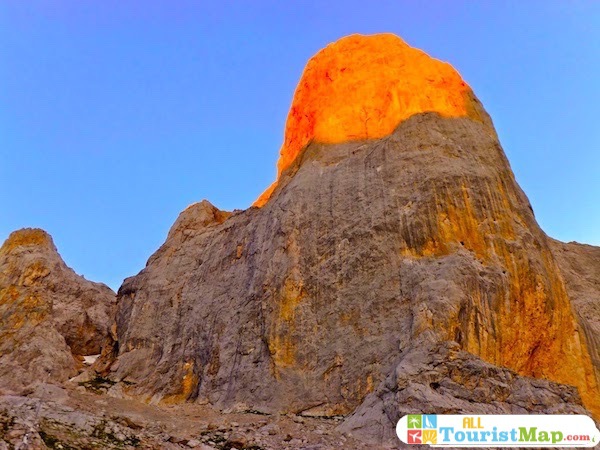
Also known as Pico Urriellu, within the natural group of Picos de Europa. It is one of the most impressive places to see in Asturias, and this is the most outstanding. It is important to note that this peak is for climbing, due to its steep trajectory to the summit. It is simply an unparalleled experience for adventure lovers. The term “orange tree” refers to the effect that the sun produces on its limestone rock achieving a fine orange tone; amazing for the eye. This 2.5 kilometer high peak culminates its last stretch of more than half a kilometer in an extreme, almost vertical, climb; rewarding for any climber in search of challenges. If you are a bit more conservative you will of course have a landscape background that satisfies the eye as much as those who choose to climb it.
Somiedo Natural Park
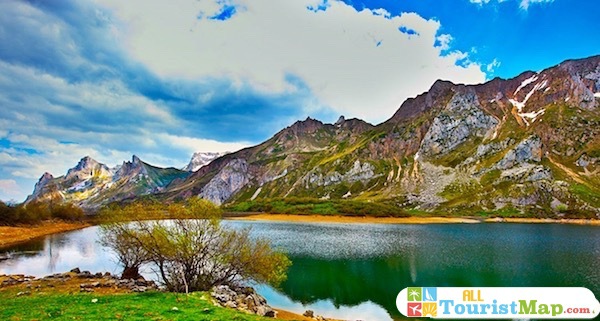
This park represents an important biosphere reserve and at the same time a bearer of experiences framed by its archaeological vestiges. It can be said that it is the place that best preserves those anthropological origins of the area. There are more than 30 villages distributed throughout the relief that makes up the park, which is made up of 4 valleys. The wild fauna is so vigorous thanks to the fact that this space is highly respected by those who populate it. It could be said that the hand of man has become part of the natural symbiosis of this magnificent environment. Through different routes this park can be discovered by guided tours. They include walks through the thick forests, lakes, cave huts and meadows suitable for relaxation as beautiful views of grazing herds. The region awaits you with a magnificent country cuisine.
Bear Path
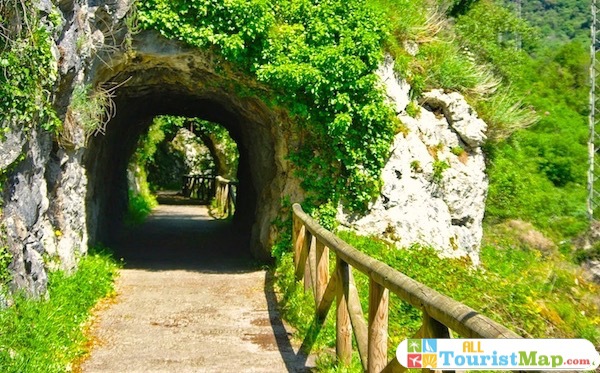
This path corresponds to an old railway track. Today it continues as a natural and tourist corridor of about 10 kilometers long. The possibility of walking through a geological environment of millions of years of formation is worth it. The trajectory of this ancient train marks a route that takes the viewer through two main sections to stops such as the Valdemurio reservoir, the Huerta caves as the main paths. This route, because it is used as a railway track, has little difficulty in being travelled. The bike ride would be a pleasant experience, besides you can run into a vast mountain fauna. Take into account that there are indications so that you do not lose sight of details and orientation during the journey. The main attraction of the trail (brown bears) are protected by wooden barriers.
Rodiles Beach
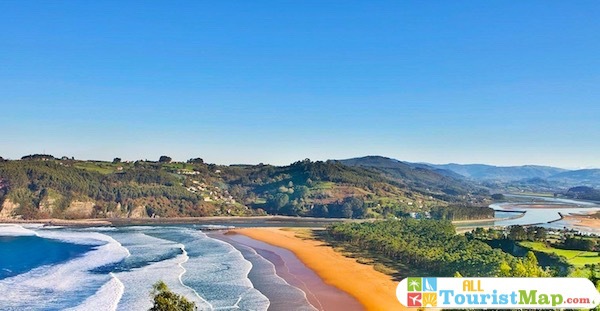
With about one kilometre in length, its coastline with soft sand positions it among the most beautiful beaches in the entire community of Asturias. Apart from its beauty, its role in biodiversity places it within the natural reserve of the Ria Villaviciosa. This beach is famous in the European surfing world for its magnificent waves. Its promenade covers the entire sandy coastline. This beach has been conditioned for the public due to its high concurrence, respecting above all the natural order. When visiting it you will find a magnificent place provided with a wooded area with walkways, benches and tables to refuel and to settle down a whole day. It also offers shower, lifeguard and parking services. Besides, its accesses are conditioned for people with limited mobility, and restaurant areas.
Lastres
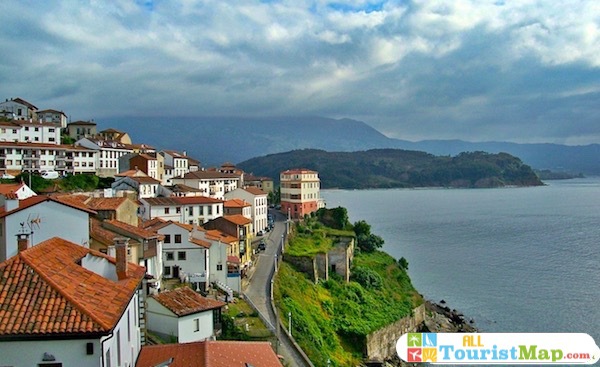
This villa is very beautiful and represents one of the most preferred picturesque paradises in Spain. Its old port atmosphere is combined with its red roofs, giving a charming touch to the Cantabrian coast. Here you will have a real option where you can stay for a long weekend. Enjoy your evenings when the fishing boats dock to start the fish market. In fact, the whole process of unloading and preparing the fish from the boat to the refrigerator is a respected traditional custom. Carried out by its inhabitants, it always marks the abundance that the sea gives to this beautiful town; it is a spectacle for the visitors attracted by its customs. Once the rula is over, it is customary to go to its bars for cider with taquinos made from Cabrales cheese.
Cares Route
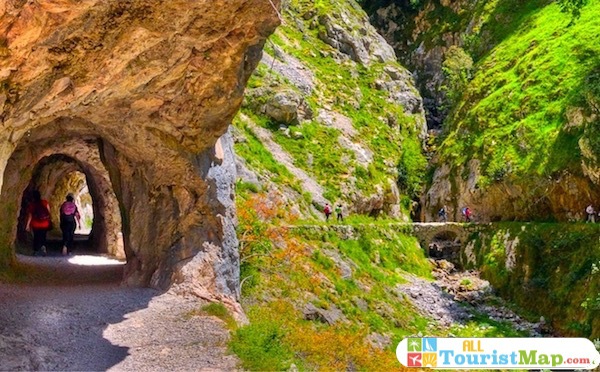
If you have reached this point it is because you have shown yourself to be an enthusiast for the wonders that Asturias has to offer. Lovers of the beach, the mountains and curious about its picturesque villages cannot end their journey without enjoying one of the most famous trails such as the Cares Route. It is a 12-kilometre route for which you will have to spend a whole day. Extending between León and Poncebos, the route covers a series of points that are easily recognisable thanks to specialised guides who will be able to accompany you throughout the trip while you make the respective interpretation. Taking the route to Soto Sejambre as a starting point, you can head for Vegabaño in search of the Mirador de los Porros, but not before passing through a huge beech forest. The route stops in Oseja, Cain, until we reach the famous Picos de Europa.
Map of Hotels in Asturias
As it is a whole province, you must have in mind the type of tourism you will use to take everything with you, even at the time of accommodation. Asturias is a vast region, known for its rural villages. Beyond the range of hotels in its large cities such as Oviedo or Gijón, there are plenty of possibilities throughout its villages; each with a unique offer to trap you in its charm and warmth. We want to help you choose a suitable place, that’s why we have grouped in our map of hotels in Asturias all those available at your discretion. We have chosen the Hotel NH Collection Palacio in Avilés as a luxury candidate at a good price. The Nienmeyer Cultural Centre is a nearby medieval building with bedrooms that combine tradition with elegance.
